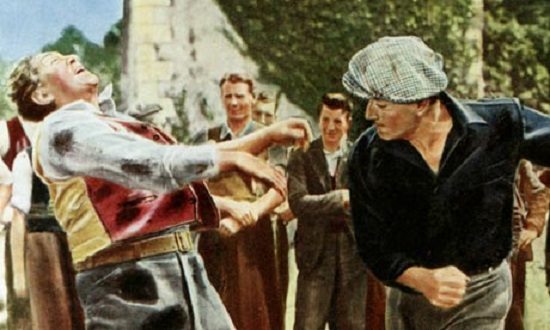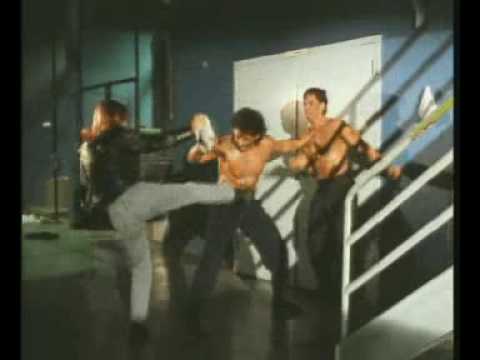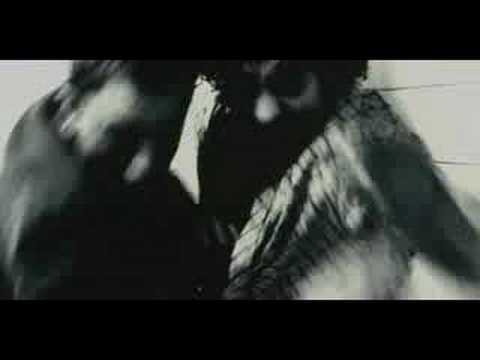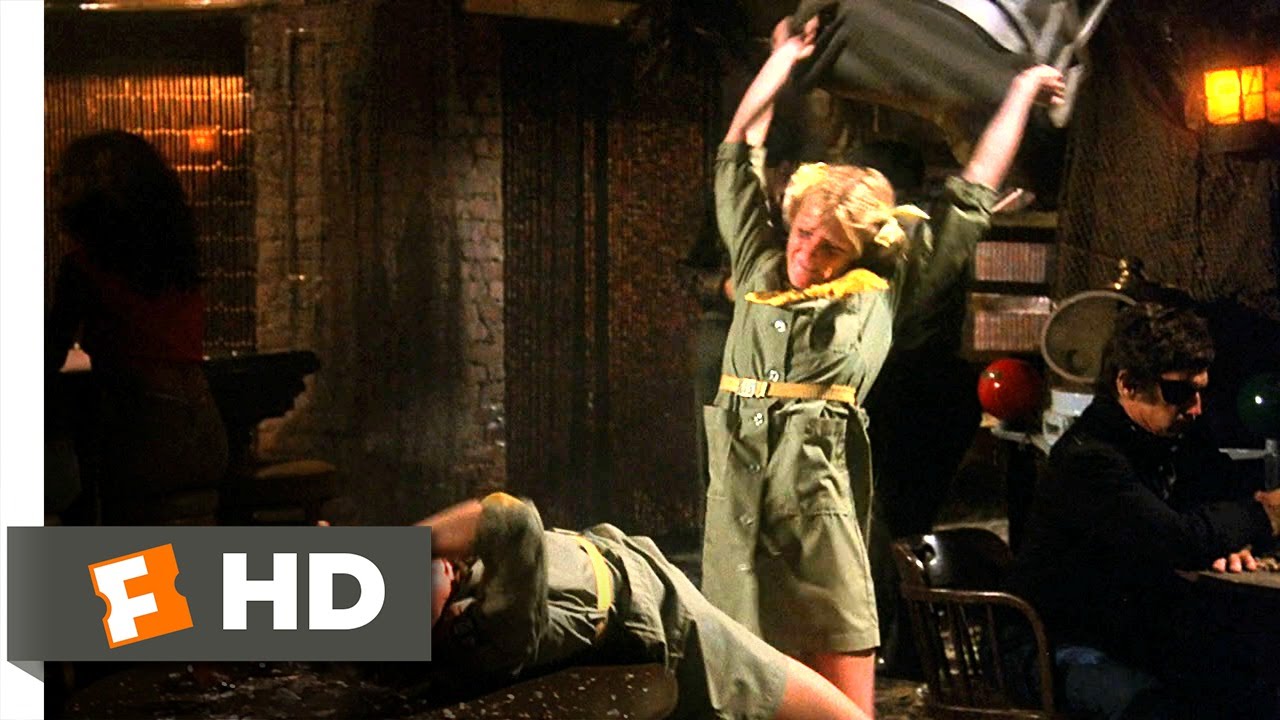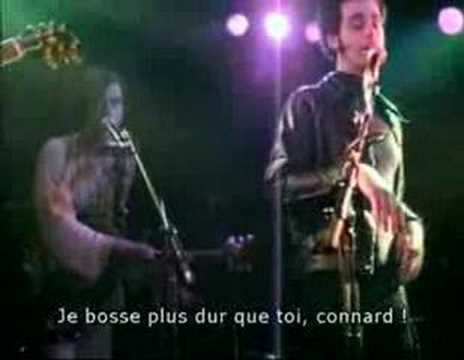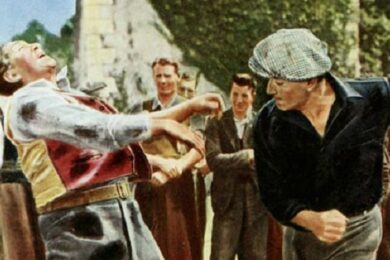It seems that for as long as cinema has existed, excited audiences around the world have gathered in darkened rooms to enjoy watching people pummelling the crap out of each other. What does this fascination tell us about human nature, one wonders? Are we essentially sadistic, or governed by primitive impulses set in motion during endless bloody brawls around the camp fire? Does our appetite for choreographed head stompings point to the fact that man is essentially a beast? A crazed animal fired by atavistic bloodlust? Irredeemable?
I don’t think so. I think that if there’s one thing that becomes apparent while scanning through the below list of Quietus writer’s favourite on screen brawls, it’s that the fight scene is as infinitely mutable and capable of expression as the medium of cinema itself. Frequently hilarious, often surprisingly moving, occasionally sexy, wince-inducing, unwatchably gruelling or technically beautiful, the great cinematic ding-dong is a magnificent, long-standing tradition and a chance for directors to exhibit real flair and imagination.
As Eugene Robinson pointed out in his essay on fight scenes for The Quietus yesterday:
"they’re either good fakes or bad fakes. But make no mistake they’re all fakes."
It’s this inauthentic quality that makes fight scenes so compelling a challenge for filmmakers. There are choices to be made: does the director want the audience to wince and groan with every blow thrown? Or cheer as our hero gains the upper hand? How to physically arrange the actors? How to capture that essential lightning-in-a-bottle quality that fighting possesses? These are the kind of questions directors face in every decision they make during a shoot, and so the fight scene becomes a microcosm in which these concerns are writ large. Put simply: filming a good brawl is extremely difficult, and a real challenge to any director’s artistry.
The below list is in no way meant to be definitive. These are simply notable and worthy on-screen scraps that caught our writer’s imaginations. Please feel free to make your own suggestions in the comments box.
Although, obviously, nothing you suggest is going to top the raw power and indefinable facial expressions captured in this raw little ripper:
Casino Royale (Martin Campbell, 2006)
The very best James Bond films – From Russia With Love (1963) and On Her Majesty’s Secret Service (1969) – were the ones that stuck closest to Ian Fleming’s original vision. Characterised by sadism that bordered on relish on the author’s part, the novels were led by an all too human protagonist whose fallibility frequently resulted in broken bones and psychological damage, traits that became increasingly airbrushed from the film series.
Having finally secured the rights to the original 1953 Bond novel, Casino Royale, and mindful of the game-changing Bourne trilogy, the producers of the franchise took the ingenious move of re-inventing the series by taking Bond right back to the beginning in all new time line, as well as controversially casting Daniel Craig in the lead role. Sticking closely to the source material Bond has to kill twice in the course of active service to secure his 00 status.
The opening sequence in the re-boot graphically displays Bond’s initiation. Shot in stark black and white, Bond is sent to kill Dryden, a section chief who has been selling classified information. Interspersed with their dialogue is Bond’s first kill. Set in a toilet in Lahore – thus accentuating the shitty nature of Bond’s work – the fight that takes place is the most vicious and wince inducing since Sean Connery and Robert Shaw went at it on a train compartment in From Russia With Love (a fight so brutal it’s still edited for television).
This isn’t a case of Roger Moore nonchalantly dusting down his safari suit but a sordid fight to the death. Punches are thrown that connect with bone and gristle, elbows thrust into faces, and kicks are launched into bodies. Each body blow has a palpable physical consequence. As the fight reaches its climax, Bond begins to strangle his opponent before thrusting his head into a sink to drown him. The camera cuts to the victim’s kicking legs as he begins to drown before zooming in on Bond’s face. There’s some terrific non-verbal acting from Craig. As the victim begins to drown, the look on Bond’s face is almost orgasmic, as if taking a life is giving him the deepest of thrills. With his victim seemingly dead, Bond gasps for air, his expression conveying first disbelief at what he’s done before slowly turning into acceptance at his newly chosen path.
"Made you feel it?" taunts Dryden but the question may as well be directed at the audience. This is no longer a world of quips, gadgets and choreography but something altogether more real, nasty and believable. And all the better for it. Julian Marszalek
Airplane! (Jim Abrahams, Jerry Zucker, David Zucker 1980)
When I was 12, I had a school counsellor (a man of 40+ years of experience) tell me, "the most vicious fights I ever had to deal with, are the ones between girls." Time has proven his point to me perfectly. Every lady fight I’ve ever seen was bloody, ugly, and usually followed up by some retribution. Meanwhile, every guy fight I have seen consisted of a lot of yelling, with brief interludes of tussling. Mostly yelling, though.
Hence, my favorite cinematic fight scene is from Airplane, where two girl scouts, in an argument over cards, go to it. There is no gradual escalation, just instant violence. Using whatever is at hand, including furniture, they use the entire bar as their ring, with the other patrons obviously used to their outbursts. The coup de grace move, with the girl’s head jump starting the jukebox, makes for an appropriate link to the subsequent dance scene.
It’s a bit of ridiculous filler, yes, in a truly ridiculous film, but it’s one of the only fight scenes I’ll watch on its own. I am still waiting to see such an event happen in person, but I am still extra cautious when I purchase cookies from them. They really are sash-wearing sociopaths. Haakon Nelson
The Cat (Lam Ngao Choi, 1992)
We all know that the Internet is merely another ploy by cats to control us. When toxoplasmosis fails they always have their army of cuteness which has so effectively gained control over humanity’s hearts and minds. Obviously before the internet, they plied their wares via film and movies and, much as they were for any character actor, the 70s and 80s were particularly difficult.
After Jonesy’s success in Alien, many other cats saw fit to dip their paws into Sci Fi, a particular highlight is the bucket of bonkers, The Cat aka Lao Mao (1992), the final film in director Lam Ngai Choi’s career, better known in the West for the over the top fist through face insanity of the live action adaptation of Riki-Oh. Here we have the timelessness of Cat VS Dog, although admittedly it’s a cat from outer space with some pretty impressive skills. You know the poor dog is in trouble from the moment the cat scowls at him, but I promise you’re not prepared for what follows: drop kicks, clothes lines and more.
The Cat is definitely a film that could do with a proper English language release, as the entire movie is a pleasurable onslaught of everything you want from glory days of Hong Kong cinema, only with added space cat-monsters. Josh Cigarette Burns
The Wrestler (Darren Aronofsky, 2008)
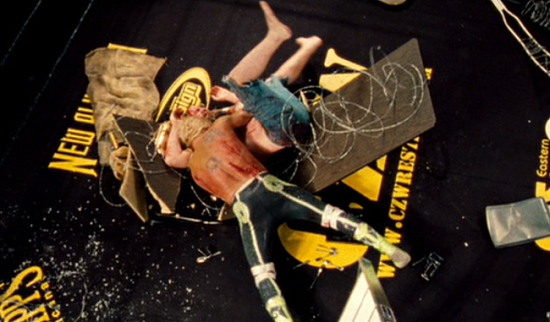
The word ‘kayfabe’ may have recently been entered into the new edition of the Oxford English Dictionary, but the world of professional wrestling has rarely been accurately portrayed cinematically. One such spectacle was depicted early in Darren Aronofsky’s acclaimed drama The Wrestler: the ‘death match’, in which the consensual choreographed nature of pro wrestling is ramped up to an altogether more visceral level. Resplendent in his “CHOOSE DEATH” t-shirt, real wrestler (and death match specialist) Necro Butcher takes Mickey Rourke’s character Randy ‘The Ram’ Robinson through a harrowing ritual of weapons-based violence, as they pulverize each other with drawing pins (or if you prefer, ‘thumbtacks’), broken glass, metal sheets, cutlery (a reference to the fork-wielding legend Abdullah the Butcher), and at one point a fan’s prosthetic leg. The fight’s escalation to the concluding high spot of Robinson plunging Necro through a barbed wire-strewn table from a ladder remains a gruesome climax to a fight scene unlike any other in cinema history. Kevin Mcchaigh
Dig! (Ondi Timoner, 2004)
Released in 2004, Dig! tells the stories of The Brian Jonestown Massacre and The Dandy Warhols, two bands that arose from the same scene but have had vastly different career trajectories. The Dandy Warhols have essentially lived out every kid’s fantasy of rock stardom. Anton Newcombe, the mastermind of The Brian Jonestown Massacre, hasn’t seen nearly the same level of commercial success, but his music has arguably influenced the current psych rock revival more profoundly than any other individual artist.
Newcombe is also infamous for getting into fights onstage – with both audience members and his band mates. Dig! documents multiple of these scraps, but the standout is the first one in the film. At a showcase in Los Angeles that’s attended by several powerful music industry people, Newcombe freaks out when guitarist Dean Taylor makes a mistake, yelling “Fuck you, get off my stage!” into the mic. Joel Gion, the tambourine man of TBJM, tries to make a joke of the situation, further irritating Newcombe by shaking a maraca as the singer-guitarist continues to rant. Newcombe shoves Gion, Taylor yells at Newcombe for pushing Gion, and then Newcombe loses his shit and tackles Taylor. In true Jerry Springer Show fashion, Gion, Taylor, and Newcombe become a tussling blur of legs and arms. None of these guys seem very likeable, and none of them get hurt (they’re ’60s revivalists; of course they don’t know how to fight), so it’s easy to laugh. At the same time, this brawl is just one of many examples of Newcombe’s penchant for self-sabotage that are strewn throughout Dig!, leaving us with a portrait of a man who seems driven to destroy his own chances at happiness. J.J. Anselmi
Monty Python And The Holy Grail (Terry Gilliam, Terry Jones, 1975)
In the hilarious 1975 cult classic, King Arthur (Graham Chapman) meets a brooding Black Knight (John Cleese) who “fights with the strength of many men”, and who would make a fine addition to his royal court. When the Black Knight snubs Arthur, the king makes to leave on his ‘noble steed’ – but he’s not allowed past without a fight…
Swords are soon drawn, helmets hammered and arms lopped off: “tis but a scratch!” comes the cry from the brave Sir Knight. Hopping around like a metal totem pole, the Black Knight is one of the most ridiculous and determined adversaries in movie history. But this iconic fight scene proves that if you at least have a leg or two to kick someone up the bum then the fight’s not over. Nadia Attia
Wheels on Meals (Samo Hung, 1984)
As the family-friendly, clownish face of martial arts, Jackie Chan is perhaps not as highly rated as he should be by hardcore fight fans. But in terms of impossibly choreographed action and willingness to endure punishment for the sake of entertainment, Chan in his prime had few peers. Even so, he was arguably out of his league against Benny ‘the Jet’ Urquidez, a professional full-contact karateka and kickboxer who dominated international martial arts tournaments in the 1970s, and still holds the record as the longest-reigning world champion of any professional sport. Their five-minute clash in Wheels on Meals is arguably the archetypal Chan fight – gobsmacking in terms of pace and precision, at times startlingly brutal, and yet dotted with incongruous touches of slapstick silliness and good-natured character moments, e.g. when the Jet cockily snaps his braces or offers a subtle nod of respect, or when Chan gives himself a Three Stooges-esque shudder of recombobulation.
One of the most appealing things about it is that it’s one of the few martial arts bouts ever to acknowledge how bloody annoying it is to be hit in the head. You know when you bend down to get a tin of cat food from under the sink, you crack your cranium on a negligently left-ajar cupboard door and you’re suddenly, infinitely angry at the entire world and everyone who’s ever lived in it? That happens to Jackie Chan twice here. Despite the hammer-on-fridge sound effects and insta-bruising, the mere fact of head-bonking irritation makes this one of the most realistic fights ever committed to celluloid. Matt Evans
Performance (Donald Cammell, Nicolas Roeg, 1970)
Nicolas Roeg’s Performance is one of the greatest films ever made in general. Ostensibly seen as a vehicle for Mick Jagger to play out a far-out washed up rock star, munching psychedelic mushrooms and romping around his Powis Square mansion having baths and sleeping with ladyfriends, it was also a deeply violent gangster film
James Fox – who quit acting shortly after the film came out to concentrate on having a breakdown – plays the mod-as-fuck Chas, an enforcer for an East End gang, who gets his arse handed to him after upsetting his boss Harry Flowers. He arrives back to his flat to find it being trashed by some of Harry’s fellas, who’ve taken a dislike to the décor and decided to throw some paint about and destroy the bedding. The ensuing scrap is one of the finest and most violent leatherings in the history of film. The paint making it look like there’s blood everywhere – even the graffiti that says ‘POOF’ adds a savage, visceral edge of the shady venn area where gangsters and homosexuality cross over – as Chas gets several shades kicked out of him. After the scrap gets into the area of homoerotic sadism, with Chas getting his back belted, he manages to turn the tables and produces a gun to put paid to his intruders.
And, even when covered in blood and feathers, James Fox looks hot as fuck throughout.Ian Wade
X-Men: First Class (Matthew Vaughn, 2011)
With a few possible exceptions – The Raid‘s one-shot pandemonium, Inception‘s ‘spinning-gravity’ corridor sequence, Bourne‘s hand-towel hullabaloo – the older I get the more like cinematic white noise fight scenes seem. It’s like with your mates and that 27th conversation on the subject of Breaking Bad. I just switch off.
Though technically more of a stand-off than a fight scene, when Magneto turns Nazi-hunter, delivering to the infinite a trio of SS escapees in ’60s Argentina with utmost sang froid, Brit helmer Matthew Vaughn had my full attention. Not since Tyler Durden checked his pretty pretend face in the broken wing-mirror of a Dodge van had I seen anything on the silver screen quite so fucking cool.
Vaughn and co-writer Jane Goodman (Mrs Jonathan Ross), much like Tarantino, are cinephile postmodernists. The squealing, porcine Nazi and his cowardly mates are movie constructs through and through, with absolutely no basis in reality; which is perhaps why this essentially xenophobic scene even saw the light of day. They simply are not real. Tarantino, of course, went one step further in Inglorious Basterds and rewrote history, gifting the Jewish world the fantasy Adolph obliteration denied to them in the Füherbunker.
With an elegant Fassbender lending his odd darkness to the role of young Magneto – all callous glee and unheroic vengance – the scene also highlights just how much film-cool there is to be mined from the Magneto character and his unique metallurgical superpowers. In the earlier films he is a god – a levitating, cop-car elevating deity able to relocate entire manmade landmarks. Here he’s a murderer, albeit of the deserving. "Let’s just say I’m Frankenstein’s monster." he tells them, with not even Fassbender’s Whitehall-via-Cork accent ruining a pay-off line of such rich and fascinating significance for the character.
Most of all, it’s just a brilliantly mounted sequence, reminiscent of prime early Spielberg in its old-fashioned use of mise-en-scene, slow-burning set-up and composition, and more than reminiscent of Inglorious Basterds magnificent tavern centrepiece for old fashioned dialogue. Suffice to say, the scene also reaffirmed Kick Ass director Vaughn’s newfound status as Britain’s greatest action director, second only to, of course, Gareth Evans. John Calvert
They Live (John Carpenter, 1988)
John Carpenter’s They Live is a witty sledgehammer of a satire, that’s still as trenchantly righteous as it is riotously entertaining. It also features one of the most absurd, gratuitous, and downright genius fight scenes ever to be put to celluloid.
About two thirds into its runtime, protagonist Nada- played by pro wrestler Roddy Piper- gets into a slight spiff with his work buddy Keith David. Nada is trying to get David to put on the magic sunglasses that reveal the alien capitalist conspiracy brainwashing humanity. Of course things don’t go too smoothly, so they beat the ever-living shit out of each in a dingy unadorned alleyway for a solid six and a half straight minutes.
It’s the platonic ideal of a fight; two huge dudes, completely unable to resolve their difference with words, pummeling each other into bloody oblivion. And it just goes on, and on, and on, and on. And then it goes on some more. There’s not much rhyme or reason to it, and narratively and structurally it’s downright perverse in its repetitive length.
Yet there lies its genius, because fighting doesn’t really make a lot of sense. Kicking the shit out of a person is a pretty silly and undignified thing to do. Watching two people fight also just happens to tickle all those sweet lizard brain impulses. Watching a grimy alleyway fight stretched out to ludicrous lengths just exposes that inherent absurdity for all to see. It’s much like those magic sunglasses themselves. James Ubaghs
Blazing Saddles (Mel Brooks, 1974)
Probably the greatest ‘meta fight’ ever staged in cinematic history, or maybe the only one. It’s 1874 and the residents of the frontier town of Rock Ridge are about to be run out of it by the scheming Hedley Lemarr, a man who intends to embark on a “great crusade to stamp out runaway decency in the West.” To do so he has assembled an army of the “worst dregs ever”, including in their number a shock unit of Nazi storm troopers, Hells Angels sporting handlebars from their hogs but no hogs, and members of the Ku Klux Klan whose white cloaks sport smiley faces and the words ‘Have A Nice Day’. Standing in their way are the Rock Ridge townsfolk, led by Sheriff Bart (Cleavon Little) and Jim, the “Waco Kid” (Gene Wilder).
Having fooled the bad guys into attacking a fake Rock Ridge, Sheriff Bart and the townsfolk move in to finish the job. A mass fight ensues. At this point the camera pans back to reveal the Warner Bros. studio lot itself. We cut to a musical on one of the sound stages, all top hats and tinsel and camp male dancers. The fight comes bursting through a wall of the set, and the ‘fourth wall’ with it, and soon the actors in the musical are embroiled in the brawl. The scene cuts to a studio cafeteria full of characters and extras, moments before the fight finds its way here too, now morphing into the classic slapstick pie fight.
Blazing Saddles was released in 1974, a brilliant satirical riposte to the nonsensical myth-making and convenient airbrushing of so many Hollywood Westerns – Tarantino’s Django Unchained owes it a debt of gratitude, particularly in the scenes involving the Ku Klux Klan. Mel Brooks’s film also parodied the extent to which the violence in so many films of the genre had become stylized to a cartoonish pitch. Established fight choreography is subverted, playing on its circus and musical hall roots, and the sound effects of fist fights are cranked up to even more ludicrous levels than those found in ‘serious’ Westerns. Incidentally, that absurd ‘thwacking’ sound of fist on face common to any celluloid bar brawl was traditionally created by clacking two billiard balls together or slapping a wet towel against a wall. The next time you find yourself spilling the beer of the local hard man, you might want to suggest this as an alternative. Robert Bright
If… (Lindsay Anderson, 1968)
It’s my personal belief that all the best sex scenes begin with fights, and all the best fights feel as if they have the potential to turn into sex scenes. Happily, Lindsay Anderson’s If… provides an example that satisfies both requirements: a confrontation between a delinquent, proto-Droogian Malcolm McDowell and a woman pretending to be a tiger that is, quite frankly, one of the most seductive scenes on celluloid (ask me, sometime, for the rest of my list). ‘The Girl’ – one of cinema’s many femme fatales who is forced to go nameless, appended as usual by that damned definite article – is as mesmerising to us as she is to herself in her mirror. McDowell is, as yet, untainted by the guilty sex-appeal of his teenage rapist role, although the postures and poses here, now that I think about it, match Clockwork‘s closing orgy more than a little. Layers on layers, and tigers in mirrors – either way, the result is perfectly choreographed, as in a dance, and the scene’s weird, syncopated rhythm can’t be bettered. Good fight scenes and good sex scenes, made for big screens, are all about gymnastics, and If’s cafe fantasy has them in spades. Other notable factors: the tribal-choral jukebox soundtrack (the ‘Missa Luba Sanctus’, by Les Troubadours du Roi Baudouin), McDowell’s schoolboy-playing-at-being-handy demand to have his coffee ‘black!’, and Christine Noonan’s eyebrows. Phillipa Snow
Serenity (Joss Whedon, 2005)
"Hey, a tussle."
Serenity is the early completion of a story Joss Whedon had originally wanted to tell over seven seasons of Firefly on TV. In the end, he only got 14 episodes. So of course, the film had to be a contraction and prioritisation of a much larger story. Certainly, there was a lot more to know about all these characters, but Serenity chose to tell, above all, the story behind mysterious siblings River and Simon Tam (Summer Glau and Sean Maher). They’re not members of the Serenity’s crew, not yet, although Simon’s trading medical services for passage. His traumatised sister was a mystery in Firefly – a damaged little waif, floating around the spaceship being alternately spooky, sweet and crazy. There’d been a few hints about her abilities as a psychic and a sharp shooter, but uncovering the secret of what the Alliance scientists did to her in their lab – and by extension, the most shameful secret this solar system’s government has – is the driving force behind the film. This bar fight is the first real exploration of what River Tam is. Like Mal (Nathan Fillion), we really don’t know her yet. It’s clear she’s under outside control – the soft focus and isolated sound at the start of the fight put us in River’s head for a moment, and show us her altered reality. And it’s clear her brother knew this was a possibility all along. It’s a pivotal moment in Mal’s complicity in the Tams’ flight from authority. His reaction to what he sees River do is completely in character – to take the pair back on board, despite what he’s just seen and despite his earlier willingness to let them go.
The obvious point of comparison for River is Whedon’s other arse-kicking TV heroine, Buffy Summers (Sarah Michelle Gellar). Gellar was a figure skater and black belt in Tae Kwon Do, and Buffy’s fights were athletic and acrobatic, often involving somersaults and a lot of running. Summer Glau is a classically trained ballet dancer, though, and her fights in Serenity are designed rather to show off her grace. She moves like a dancer rather than a fighter, and manipulates her opponents’ weight and momentum as much as her own. There’s a lot of standard fight scene techniques here, of course – jerky camera movement, quick cuts, urgent music. There’s also classic Whedon wit – Mal delicately moving the fan aside and River’s treatment of Jayne (Adam Baldwin) – and the interplay of the red and blue light in the bar is a stylish way to add a sense of visual confusion after we snap out of River’s soft-focus view.
Whedon’s tiny-young-female-superhero stories aren’t without their problems. The whole point of River’s story is that all her agency was stolen from her, and even with her superhuman strength, she doesn’t have any choice about what she is or what she does. But Serenity, from one angle, is the story of nine other people’s attempt to help her get back her autonomy, and to integrate the side of her this fight shows, the side that was never really part of her, with her real self. Who knows how things would have worked out for River in seven seasons of Firefly? In the end, though, the real victory for River will be never to have to fight again. Yasmeen Khan
Only God Forgives (Nicolas Winding Refn, 2013)
As one of the foremost visual mediums in the world, the influence of video games and gaming culture has been incalculable across nearly all disciplines. Everything from comic books to electronic music show the thumbprints of a generation who spent endless hours in front of glowing pixelated screens honing their response times. Cinema, however, is only just beginning to acknowledge the enormous stylistic debt that it owes to gaming, mainly through the work of a bunch of directors of exactly the right age to have been affected forever by their time in front of the Nintendo.
Think of the justifiably famous ‘corridor fight’ in Chan-Wook Park’s Oldboy. The protagonist moving across the screen from left to right, nullifying foes as he progresses in a manner that deliberately brings to mind ’80s and ’90s brawlers such as Final Fight and Double Dragon. A ploy that works precisely because the gritty messiness of the scene subverts our expectations of what to expect from such a set-up – the flashing neon and weightless pummellings of the games all grown up and aged. Curdled into dull greens and the sound of bones crunching.
One director who has taken an even more direct approach to the influence of gaming culture is Nicolas Winding Refn, and Only God Forgives, his violent parable of familial loyalty and retribution and arguably his masterpiece, is his most direct tribute to the medium. The most obvious example of gaming’s influence upon the Danish director comes in the film’s centrepiece fight scene. It starts with a challenge, Ryan Gosling’s Julian walking from left to right across a neon Bangkok like a character from some existentialist version of Streets Of Rage to deliver Vithaya Pansringarm’s Chang a simple invitation: "Wanna fight?"
CHALLENGE ACCEPTED! And if there were any doubt about where this scene is taking its cues from, Cliff Martinez’s arpeggiated electronic score removes them instantly. We’re in the domain of the beat ’em up – games such as Street Fighter and Mortal Kombat, their simple sideways-on set-up mirrored by Refn’s sudden cut to a neon-lit dojo and his two characters squaring up against each other in a way that suggest that they ought to have glowing energy bars above their heads.
Of course, if this was merely window dressing then it would be worthy of notice but little more. Refn then proceeds to challenge our expectations by having Chan absolutely and thoroughly annihilate Julian – our main character and focal point – in one of the most embarrassingly one-sided slap-downs in cinema history. It’s the kind of thrashing that brings back memories of playing Street Fighter with the kid who was a lot better than you but steadfastly refused to go easy, pounding you with every special move and combo under the sun until you were left in no doubt who was the boss.
It’s this willingness not just to adopt aesthetics but to subvert them as well that marks Refn out as a director of note and the film as a masterpiece of consistency and focus. Mixing gaming’s painless artifice with visceral, nose-breaking violence and humiliation makes for the perfect metaphor for Only God Forgives‘ mythic and artificial world of punishment, honour and bloody consequence. Mat Colegate
Brick (Rian Johnson, 2005)
Rian Johnson’s Brick has plenty of funny moments, but more wryly amusing than laugh-out-loud. The fight scene is an exception, mostly due to the cinematography. It begins with an establishing shot of the school parking lot as football player Brad Bramish is telling a small group how he could single-handedly change the fortunes of the team, if only the coach would let him play. The crowd seem mid-tier, with only one teammate present in his letterman jacket. The camera pans hard left, and now we see those on the periphery of his audience (and, it must be said, in regards to high school cliques he’s drawing a pretty low-rent crowd here), plus Laura, an enigmatic girl in a convertible. This position is held for a moment, and then we’re alerted to the off-camera arrival of Joseph Gordon-Levitt’s Brendan as the rear of the car dips. Laura looks, the camera follows, and we see Brendan leaning against the car. Eye contact is made, first between Brendan and Laura, then Brendan and Brad, causing the jock to finally break off his monologue. Apparently Brendan’s presence here is unwelcome. A little smart-arsery follows, with Brad’s repetitive chorus of “Yeah?”s earning him the rejoinder “There’s a thesaurus in the library. ‘Yeah’s’ under Y. Go ahead, I’ll wait”, and then it’s on.
They relocate to somewhere more private – a different parking lot – and punches are thrown. It’s here that the camera gets all the laughs. We see Brad’s head and shoulders from behind as he’s telling his friend what’s about to happen to the much weedier, bespectacled Brendan, and as he turns, the first punch bursts into the frame and knocks him to the ground. This technique of surprising the audience is used again seconds later. A static camera holds a long shot of the parking lot, showing bystanders running towards the action, and the fighters enter the frame from the left as Brendan shoves Brad through it and off camera to the right. Moments later they reappear from the other direction before disappearing again; this time Brad has the upper hand. Now the jock beats the nerd as expected, although the underdog gets a couple of good kicks in, but finally he’s felled. As Brad puts his jacket on to walk away, however, Brendan reappears for one final, unexpected, victorious blow, and Brad is out.
There’s lots of great elements here – a sharp, sarcastic screenplay, the subversion of the high school fight genre conversions, and of course Joseph Gordon-Levitt – but it’s the cinematography that has the most impact, and often this is by letting the action enter the frame unexpectedly. So many fight scenes try to make too much of the action. This does the opposite, and is much better for it. Pete Redrup
Slap Shot (George Roy Hill, 1977)
George Roy Hill’s Slap Shot tells the story of the Charlestown Chiefs, a minor-league ice hockey team somewhere in North America. It’s a comedy about violence, exploring what happens when a game that’s intrinsically pretty violent anyway becomes an outlet for the frustrations and miseries of both the players and their small, declining factory town. Charlestown’s mill is closing, putting 10,000 workers out of a job, and all player-coach Reggie Dunlop (Paul Newman) wants to do is give them something to cheer for. It’s the only kind of hope he has to offer. Unfortunately, the Chiefs are terrible, and they lose all the time. That is, until manager Joe McGrath (Strother Martin) signs teenage psychopaths the Hanson brothers (David Hanson, Steve Carlson and Jeff Carlson) to shake things up and draw the crowds. They’re terrifying man-children, “a fucking disgrace”, as Johnny Upton (Allan F Nicholls) points out. But an initially reluctant Dunlop discovers that picking fights on the ice is a way to not only win games but also delight the fans, who spend most games yelling at them for being pussies and urging them to hit their opponents.
The best thing about this particular fight scene is just how absurd it is. At least, up until now, the violence has happened during actual play, and as a response to some kind of provocation. Here, though, there’s no waiting for an excuse. A Hanson just starts punching an opponent for looking at him funny during the warm-up period. It’s kind of a perfect distillation of Dunlop’s new tactic – the fans are here for the fighting, so why bother with the hockey bits in between? And it’s hilarious. The film doesn’t even really pretend to take the mindlessness of the Hansons’ violence seriously at this point – it would be far too disturbing if it did – and so taking it to its natural conclusion, the more violent they get, the more needless it is, the funnier it is. This scene is also brilliantly framed. The cut to that particular line from ‘The Star Spangled Banner’, ‘And the rockets’ red glare’ – it’s sublime.
The comedy of Slap Shot is broad – players too shit-faced to stay upright on the ice, miscommunications with French Canadians, swearing, sexual shenanigans. But the way it tackles Charlestown’s social problems gives it warmth and heart. This is the last purely funny fight (at least, until the glorious chaos of the final game) before the film takes a darker, sadder tone as Reggie and the Chiefs start to lose their way. Their violence starts to get them into legal trouble. The fans start to see the downside to supporting a team full of goons. Sport shouldn’t be like this. We know this already. But in this scene, Slap Shot says, just for a short time, why not let ourselves join the Chiefs’ booster club in just enjoying some senseless violence? Yasmeen Khan
The Big Lebowski (The Coen Brothers, 1998)
The Big Lebowski must be the funniest film ever to have had all the fun analysed out of it. The Dude is Jesus? Walter and The Dude are the yin and yang of American self-image while the Nihilists are the USA’s various external enemies? Donny is merely a figment of Walter’s ‘Nam-fractured psyche and doesn’t corporeally exist? Maybe, maybe not. But does it matter? The film’s creators don’t seem to think so. Maybe it’s best regarded as simply a sprawling, comical American picaresque strewn with diverting but essentially meaningless red herrings?
So, extract the herrings and what remains? Well, the characters, obviously. And what do they do? Essentially, they faff about. They throw cases of dirty undies. They smash up cars with wheel-jacks. They imbibe caucasians. And they go bowling. Arguably, their lack of direction is precisely the point. We wouldn’t have them any other way.
Still, finally, in the bowling alley parking lot, the Nihilists confront The Dude, Walter and Donny and some sort of potential climax ambles diffidently into view. And this is where Walter Sobchak, up to this point a lumbering hulk of pointless self-importance and floundering rage comes into his own.
Walter is too absurd to be truly menacing. But he’s also too menacing to be truly absurd. The tone of The Big Lebowski undermines his potency at every turn but in a slightly different film, Walter would be a terrifying character. To elide Walter with another Coens’ creation, he’s No Country For Old Men’s Anton Chigurh, robbed of malevolent charisma and any real agency and instead, dressed in unflattering shorts and an army surplus jerkin, cursed with seething, simmering resentment and played for laughs. But finally, Walter is in his element.
Once what passes for negotiations are complete, one of the Nihilists bleats about fairness. “Fair?!” scoffs Walter, brilliantly. “Who’s the fucking nihilists around here? You bunch of fucking cry-babies!” At the point where logic has deserted everyone else, he’s firm, principled, tough as teak and even, eventually compassionate ("You’re doing fine, Donny. We got help choppering in!”). Walter has saved the day, bitten a Nihilist’s ear off and, in the process, subsumed the parking lot throw-down into his own personal narrative of unsung heroism and redemption. Finally, Walter is America again; brutal, paranoid, pugnacious, provocative and, in his own mind, absolutely justified. Oh right. We weren’t going do Lebowski subtexts, were we? Philip Harrison

